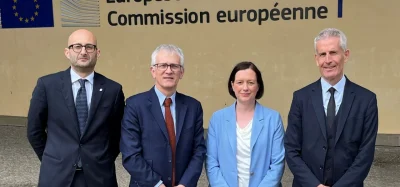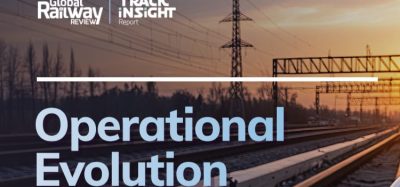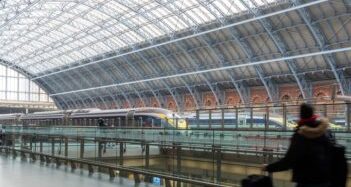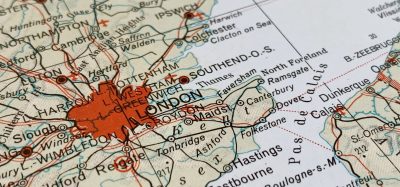High-speed rail: Helping to shape the railways of tomorrow in Britain
Posted: 3 December 2014 | | No comments yet
In January 2006, when Greengauge 211 was launched, the Channel Tunnel Rail Link (HS1) in the UK was incomplete, and there was no expectation that it would be followed by further high-speed lines. For Global Railway Review, Jim Steer – Director of Greengauge 21 – the not-for-profit organisation established to research and develop the concept of a high-speed rail network as a national economic priority – explains that with colleague Director Julie Mills, the organisation set themselves the challenge of bringing the question of a national high-speed rail network into the domain of public debate.
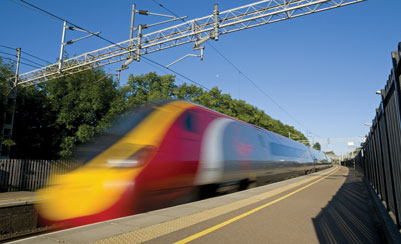

Eight-and-a-half-years later, with cross-party support for high-speed rail investment and the first phase of HS2 (High Speed 2) progressing through its Committee stage in Parliament, there are new challenges ahead, and Greengauge 21 is adapting to meet them. A new not-for-profit company has been established – the High Speed Rail Industry Leaders’ Group2 – formed by a group of industry businesses and experts with the aim of building a centre of excellence and expertise on high speed rail in the UK.
Greengauge 21 itself has, in 2014, broadened its ambit. We continue to promote the debate around the need for a national high-speed network (and HS2 is a great start, but not the full story). But we also see many of the planning challenges ahead for the rail sector lying elsewhere – in upgrading and modernising the existing railway to meet continuing demand growth – ‘shaping tomorrow’s railway’. Indeed, many of the questions around HS2 surround its interface with the existing network, now that its route (for Phase 1 at least) is effectively defined.
The Greengauge 21 story can be traced through the succession of reports published on our website1, and we get a lot of positive feedback from those researching high-speed rail who use this as a resource base. By commissioning research and exploring the business case for high-speed rail, thinking from the start about the wider objectives for the nation rather than narrow areas of railway technicalities, we were able to spark politicians’ and policy-makers’ interest. Having argued for a national high-speed rail network, we posed the ‘where to start’ question, and published ‘HS2: a Proposition – London, Heathrow, Birmingham and the North West’ – in June 2007. But still no sign of a response at Government level. At the time, high speed rail was not seen as a priority; it solved a problem in the mid-2020s, when there were more pressing matters to address. It is notoriously difficult to engage political support for measures that bring results only in the longer-term.
So in 2008, Greengauge 21 formed a Public Interest Group and we asked funders to step forward to develop a plan for a strategic network, examining network options and carrying out a full economic appraisal. The sponsorship was broad: every English Regional Development Agency, Transport for London (TfL), the Passenger Transport Executive Group (PTEG), the City of London Corporation, Network Rail, BAA, the Railway Industry Association, the Association of Train Operating Companies (ATOC), local authorities in Manchester, Birmingham, Sheffield, Newcastle, Edinburgh, Glasgow, and with £0.75m funding we were able to commission the rigorous study needed. If government wasn’t (yet) prepared to be far-sighted, this broadly drawn coalition of interest was. The report published in 2009 ‘Fast Forward’ still provides a blueprint for the nation, with two north-south high-speed lines, and some important east-west links, including across the Pennines.
It is our view that there would still be virtue in adopting a national strategy for high-speed rail, an updateable plan alongside a national spatial plan that can set the context for other planning decisions. This is the way to get efficient investment decisions, along with participation and engagement at local and regional levels. Transport networks can only be understood as a system, and many of the problems that HS2 faces arise from it sometimes being regarded as a project, not part of a wider programme.
From the outset, we have seen the case for high-speed rail as resting on capacity, on supporting regional and national economic development, and on the environmental benefits that a substantial switch to rail can bring.
Undoubtedly a great stimulus to high-speed rail in Britain came from the launch of the second phase of what by then had become known as HS1 in November 2007 – a royal opening event at St Pancras International station to celebrate a great piece of engineering, a project (finally) delivered on time and budget, a project that allowed the nation to embrace contemporary engineering skills alongside its deeply felt nostalgia for past achievement, a combination made so visible at St Pancras International station itself.
Within a year, the Conservative Party, then in opposition, announced in September 2008 its commitment to building high-speed rail in Britain. More remarkably – but certainly most realistically, to do so with public funding. A month later, Lord Adonis seized the moment for government. He transferred to the Department for Transport (DfT) and was quick to find an opportunity in January 2009 to launch HS2 Ltd – a government-owned company with a remit to deliver a detailed plan for a high-speed line from London to the West Midlands and potentially beyond. Their scheme was published in full ahead of the 2010 election. All of the political parties expressed their support, and one of the first areas on which the two parties that formed the coalition government could agree ‘straight away’ was to progress HS2. Nobody who looks at this pace of development could sensibly accuse our planning process of being slow.
Of course, a period of consultation and the parliamentary process by which powers to construct HS2 would be granted followed, and they take time. Greengauge 21 saw plenty remained to be done. Nobody else was exploring the question of released capacity; of fares levels for HS2; of the interface with hub airport policy; of how the public sector investment in HS2 could be returned to the Exchequer through concessioning or through the increased tax receipts that stem for the higher productivity that HS2 was likely to engender. All these, and more, were commissioned from leading experts and duly published.
For HS2, the debate intensified with line of route campaign groups gaining extensive media coverage. Apart from a guest appearance by Julie Mills on BBC’s Countryfile, the media showed little interest in hearing the wider case for HS2.
With the recession biting, the government resolve was tested but remained unflinching (while UKIP back-tracked on its initial support for high-speed rail). Meanwhile, the public sector agencies that had recognised back in 2008 the connectivity benefits of high-speed rail were themselves the victims of spending cut-backs, either abolished outright or unable to devote funding to research activities.
So in Greengauge 21 we looked elsewhere for sponsorship. In 2012 and 2013, rail businesses funded work into another key question, which is the carbon impact of high-speed rail. We put the workstream under an ‘Industry Leaders’ Group’ banner and set out to recruit further members. We saw virtue in a wide-ranging group – embracing universities, manufacturers, engineers, train operating companies and others such as legal and financial businesses. That’s what it has become.
The High Speed Rail Industry Leaders’ Group2 is using industry expertise to help support the successful delivery of Britain’s national high-speed rail network to world-class standards. It is the private sector, after all, that will deliver HS2. And we are not alone in sensing that this project offers a real opportunity to coalesce national investment policy with industrial policy and create for the nation a legacy of a resurgent rail industry.
The High Speed Rail Industry Leaders’ Group has now been spun-off as a separate entity that aims to ensure the delivery of the high-speed rail network in Britain leaves a lasting legacy for growth, jobs and skills, and collaborates to:
- Identify supply side constraints, skills or resource shortages through the supply chain
- Benchmark expertise against international experience
- Establish best-practice guidelines
- Showcase the expertise available and identify skills development avenues.
This Group is keen to expand its membership base and build its influence. Already it has published forecasts of the jobs that HS2 will create across the country during its design, construction and operational phases. It aims to reach out to SMEs (Small and medium-sized enterprises) in the sector as well as the major players. High-speed rail is a long-term affair, with investment stretching over three decades.
Turning back to Greengauge 21, its management team has been strengthened with Leo Eyles (Labour Market and Transport Economist) and John Jarvis, (former transport lead for the Northern Way) joining as Associate Directors. We continue to publish research into high-speed rail – for instance into questions around how HS2 can best serve Staffordshire and the Potteries and the question of HS2’s links with HS1. We look forward to re-engaging on the question of how best to tackle the Anglo-Scottish cross-border opportunity, where the travel market remains dominated by wasteful short-haul aviation and the benefits of HSR – as ‘Fast Forward’ showed – are at their highest.
Under our wider remit, in 2014 Greengauge 21 has been engaged in examining the wider social and economic case for electrification of the North Wales Coast Main Line; the question of how to get greater use out of HS1 in Kent and East Sussex; and we will be carrying out an investigation into the benefits of a pro-active investment strategy for the Northern franchise, and shortly commencing an in-depth examination of the role of rural railways, including how they can deliver more to the areas they serve.
This type of active engagement – working usually for an ad hoc consortium of interests, developing cogent arguments based on experience elsewhere and the evidence based locally – can be a powerful way of achieving progress. It can be done. High-speed rail: not on the radar in 2006, but now in Parliament with a 10:1 MP vote in favour.
References
Biography
Formerly, Head of Strategic Planning at the Strategic Rail Authority (2002-2005) and Founder of Steer Davies Gleave (where he remains a Director), Jim Steer is Director of Greengauge 21 and the High Speed Rail Industry Leaders’ Group and immediate past-president CILT. Jim has carried out extensive studies into high-speed rail both in Britain and elsewhere, including Spain and the U.S.A. He recently led the Steer Davies Gleave team producing the One North report for the northern cities.




